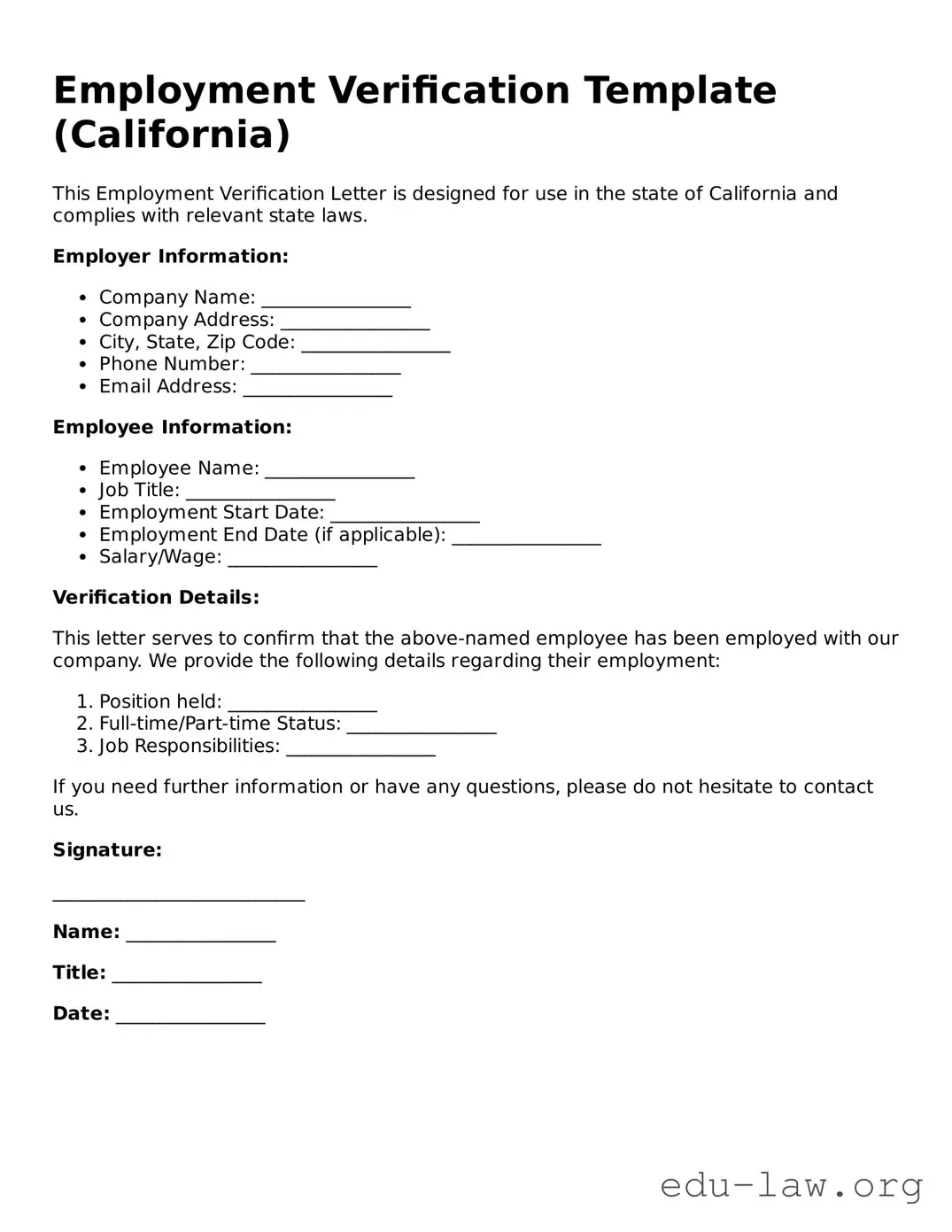What is an Employment Verification form?
An Employment Verification form is a document that verifies an individual's employment history. It typically includes details such as job title, dates of employment, salary, and the nature of the employment. Employers or organizations might request this form to confirm the information provided by a job applicant, especially during the hiring process.
Who typically requests an Employment Verification form?
Employers, lenders, and rental agencies are among those who commonly request an Employment Verification form. When applying for a job, a prospective employer may ask for this document to ensure that your employment history is accurate. Similarly, landlords or financial institutions may require it to assess your financial responsibility and stability.
How can I obtain an Employment Verification form?
Employers may have their own specific forms for Employment Verification. Alternatively, you can find templates online or create your own based on standard practices. If you're applying for a job, it's advisable to ask your previous employer for this verification directly, as they can provide the most accurate information about your employment history.
What information is required on an Employment Verification form?
Typically, the form should include your name, the employer’s name, job title, employment dates, and salary information. It may also ask for details concerning your job responsibilities and reason for leaving. Providing complete and accurate information is crucial since inaccuracies may lead to delays or complications in the hiring process or other verification needs.
